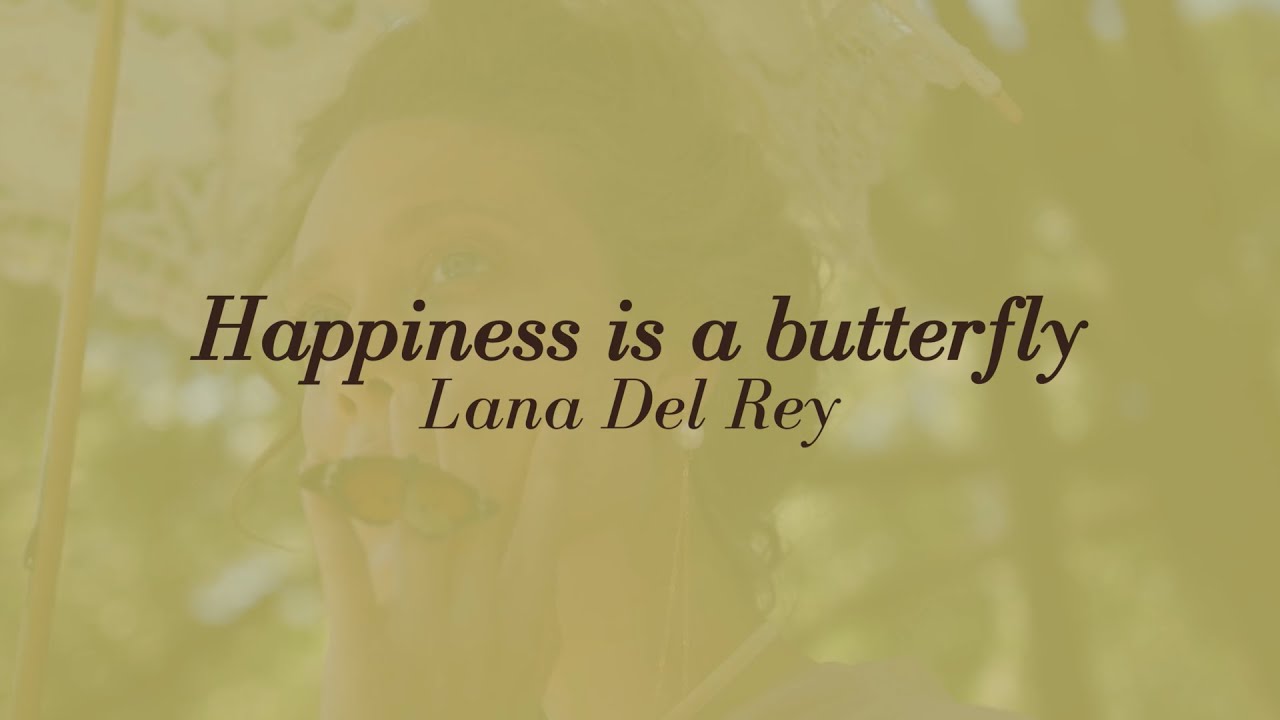In the ethereal world of Lana Del Rey‘s music, emotions are painted with a brush dipped in melancholy, longing, and a hint of transcendence. Her lyrics often serve as a portal to a realm where introspection meets poetic reverie. One such example is “Happiness is a Butterfly,” a track from her album “Norman Fucking Rockwell!” that encapsulates the complexities of human emotions within its haunting melody and enigmatic lyrics.
As the needle drops and the first notes of “Happiness is a Butterfly” trickle through the speakers, listeners are transported into Lana’s universe, where time seems to stand still and emotions flow like rivers of silk. The song’s title itself is intriguing, hinting at the elusive nature of happiness, likening it to a delicate butterfly that flutters just out of reach. Del Rey’s lyrics delve deep into this theme, weaving a tapestry of introspection and yearning.
The opening verse sets the tone for the introspective journey that lies ahead:
“Do you want me or do you not? I heard one thing, now I’m hearing another Drop me in the water, oh”
In these lines, Lana grapples with uncertainty and the fickleness of human emotions. The ambiguity of desire and the fluidity of feelings are themes that recur throughout her music, reflecting the complexities of real-life relationships. The metaphor of being dropped in the water conjures images of immersion, perhaps suggesting a plunge into the depths of emotional vulnerability.
The chorus of “Happiness is a Butterfly” emerges like a melancholic refrain, repeating the titular phrase:
“Happiness is a butterfly Try to catch it like every night It escapes from my hands into moonlight”
Here, Lana poetically captures the elusive nature of happiness, likening it to a butterfly that flits away into the night. The act of trying to catch it becomes a metaphor for the pursuit of happiness itself, a pursuit that often feels futile and ephemeral. The imagery of the moonlight adds a touch of romanticism to the scene, evoking a sense of longing and wistfulness.
Throughout the song, Del Rey’s lyrics are punctuated by hauntingly beautiful melodies and atmospheric instrumentation, creating a dreamscape that envelops the listener in its melancholic embrace. The bridge of “Happiness is a Butterfly” is particularly poignant, as Lana sings:
“If he’s a serial killer, then what’s the worst That can happen to a girl who’s already hurt? I’m already hurt”
These lines are laden with layers of meaning, juxtaposing themes of danger and vulnerability with a sense of resignation. The reference to a serial killer adds a dark, cinematic quality to the narrative, while the acknowledgment of existing pain underscores the protagonist’s emotional depth.
In the final verse, Lana Del Rey brings the song to a bittersweet conclusion:
“If he’s a serial killer, then what’s the worst? That can happen to a girl who’s already hurt? I’m already hurt”
These closing lines echo the sentiments of the bridge, reinforcing the cyclical nature of pain and resilience. Despite the darkness that lurks within the lyrics, there is a glimmer of hope threaded throughout, suggesting that even in the depths of despair, there exists the possibility of redemption and transformation.
Beyond its poetic beauty, “Happiness is a Butterfly” serves as a meditation on the human condition, inviting listeners to confront their own fears, desires, and vulnerabilities. Lana Del Rey’s music has always been characterized by its emotional depth and introspective lyricism, and this song is no exception. Through its haunting melodies and enigmatic lyrics, “Happiness is a Butterfly” offers a glimpse into the artist’s soul, inviting listeners to embark on a journey of self-discovery and transcendence.
Conclusion
Lana Del Rey’s “Happiness is a Butterfly” is a testament to the power of music to evoke complex emotions and provoke deep introspection. With its haunting melodies, poetic lyrics, and atmospheric production, the song invites listeners to immerse themselves in its melancholic beauty and contemplate the elusive nature of happiness. In the end, perhaps the true beauty of the song lies not in its answers, but in the questions it poses and the emotions it stirs within the listener’s soul.

